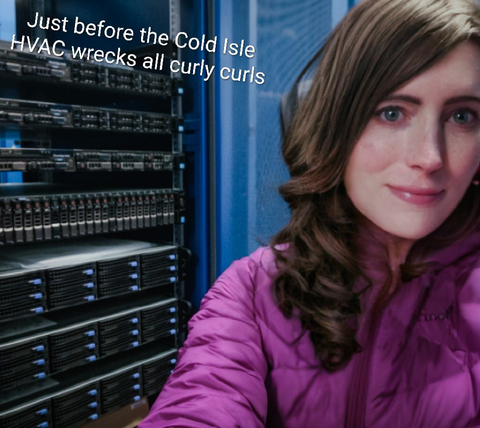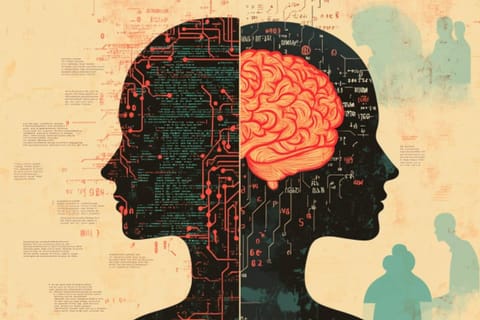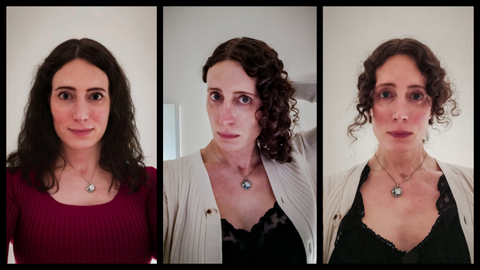Continuing from the first half of this autobiographical series, we move onward to the neurological side of post-traumatic stress, its long term impacts, and my eventual near-demise into a long term coma. Through years of persistence, an incessant yearning for knowledge and dedication to healing, an amicable conclusion ensues into the present.
Cellular Echoes, a Multi-generational Legacy of DES
Having touched on this in the first post, this section is intended as a refresher. Partially this is intended for raising awareness to a problem which affects millions of people born during the 1950s - 1980s, when DES was administered to pregnant women via medically good-intentions but without awareness to its long-term effects on the mother, children, grandchildren.
Diethylstilbestrol (DES), a carcinogenic endocrine disruptor, has multi-generational adverse effects through disruptions to the neuro-endocrine system and DNA mutations impacting cellular and hormonal development. These mutations can manifest as cancers, metabolic disorders, reproductive dysfunction, chromosomal abnormalities, and chronic neurological conditions (migraines, tumors, lesions, dysautonomia).
This genetic legacy is a backdrop upon which my life was built, which resulted in innumerable divergences of a normal-healthy path, from fulfilling desired physical expectations, procreation, and so much more.
A Reset to The Rules of Engagement
Memory is a skill we easily take for granted, often assuming it accurately captures reality as it unfolds. We're taught that our experience of the present occurs in real-time, yet in reality, there is a slight delay—signals must first travel through the nervous system and undergo processing before being encoded as memories within the brain’s dura mater. Memory is the brain’s intricate mechanism for translating sensory input into meaningful emotional and behavioral responses, shaping our understanding of both internal and external worlds.
This complex neurological system depends heavily on balanced neurotransmitter function to accurately encode experiences and guide our daily lives. Severe trauma, as seen in PTSD, profoundly disrupts this delicate neural language, permanently altering pathways—especially dopaminergic circuits—that influence emotion, cognition, and behavior. Once formed, these trauma-induced changes can become deeply ingrained, often irreversibly affecting one's neurological landscape. Coping with severe PTSD thus requires lifelong adaptation, reinforcement of coping strategies, and an ongoing, difficult journey toward acceptance.
Fragmentation of memory can be understood as a memory disorder that includes subjective and phenomenonological facets directly impacting the ability of an individual to recall memories in an integrated and holistic way.

The impaired person usually suffers from physical damage to the hippocampus. This may be due to the result of trauma, such as post-traumatic stress disorder... consequences, such as oversensitivity to some stimuli, impulsiveness, lack of direction in life, impacts to existential awareness, emotional dissociation, and often a distorted perception of oneself... requiring the patient to mask their concerns and despair.
Together We Drifted Toward The Void
Eventually, the lifeboat fell apart — the house of cards collapsed. Across the eras of a beautiful yet fractured life, layers of trauma accumulated, intertwining at the point of my near demise, when in the same year I lost my twin. We had endured those early years closely together, though our paths were not always aligned or identical. By this point, the cumulative losses had become immeasurable and insurmountable.
We experienced diametrically-opposed impacts from DES exposure, chromosomal deficiencies echoed in reverse, genomic sequencing showing the maps and flags and arrows all pointing to the wrath of diethylstilbestrol. Everyone has their limits, and we knew so very well where the next decade or two would go, the advanced treatment path involved; the trajectory was bleak and disheartening. Some may judge one's rational, data-driven decisions, fully respective of life experiences, to be inherently irrational in their moral views. Many people since have levied their opinions, but they were never forced to walk this path.
A Life Without a Mirror
Consistent with the existentially spiteful patterns of non-consensual trauma upon my body, the EMT tasked with saving my life had slit my throat open length-wise, rapidly and jaggedly in an emergent (ie absolute emergency) airway incision. This severed half of my vocal chords, permanently paralyzing that amount of vocal functionality. My brain was already off-line, in global ischemic state, lights out. There was no pain, there was nothing. I was gone.
Memories are mostly lacking from that month, though photographic timestamps provide one view, a phone held while walking, a mistaken shutter press. The askew pupils indicate a rare and severe side effect, the result of ongoing treatment having been fully insufficient. Once more, healthcare providers had failed in their long-term care. After this, nothingness.

Body moved to the ER, the OR, the ICU. A second, larger, circular incision was made in my throat, the first haphazardly sewn closed in zig-zagged scars. My limp unconscious form was hooked up to life support machines. Days passed, a week, then more. Slowly, neural matrices enervated the consciousness to reboot, to resume an awareness of our shared reality.
A pinhole of photons appeared, and from the vast darkness every cell was screaming, oxygen and a feeding tube through the stoma hole in my neck, rhythmic pulsing-machine breathing for me, the only solace a button taped next to my hand for morphine - "press to release", into the IV line. Apparently I was alive.
The pinhole of light widened, forcing outward the timeless nothingness, replaced by pure all encompassing light, then shades of grey, then shapes, without concept of meaning or definitions.
"Life will only be more difficult now."
One result of the coma was that broad sections of life, of memories, events and persons, places, experiences.. were simply gone. The variously affected zones and thalamus projections, and some functions of the posterior parietal cortex, they simply did not wake up with the rest of my brain.
I will never remember all of the memories which I have lost.
With those vacant memories, gone too were my former abilities of speech, the ability to walk, to hold a cup, to feel emotions, to focus further than the end of the bed in the ICU, to understand the passage of time. So much was lost.
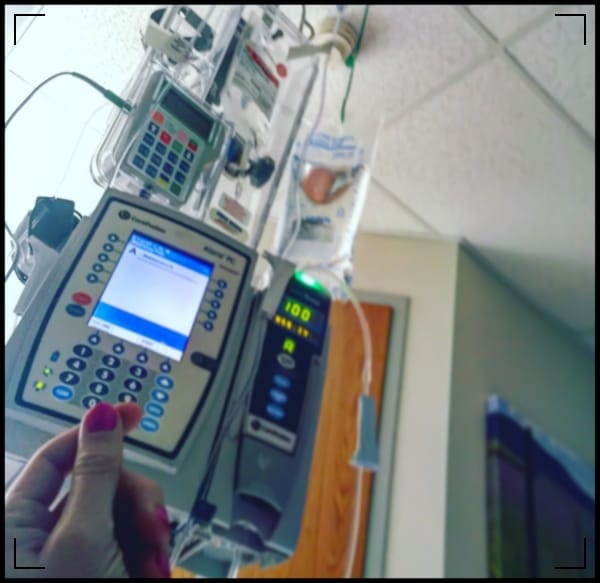
"She may never be able to speak, to walk, or leave the hospital, if she wakes up at all." - Neurologists, Attending to the ICU
As it turns out, the experience of Global Cerebral Ischemia induces substantial changes - that special "off switch" called "no more oxygen today". Global Brain Suffocation. Flatline waves. No respiration. System Shutdown. Those scars on my neck - from the respirator stoma and the EMT's emergency attempted endo-tracheal intubation - they are still present and in the mirror every day. Every morning upon waking, the scars are there, a forever reminder of the Void, the Loss.
Eventually I did relearn how to walk, to speak, to conceptualize the passage of time, and how to exist without those old blocks of memories weighing me down. I learned how to confront what remained, which helped with working through the newly faced medical trauma from the events of the ICU and temporary non-existence.
How did my brain wake up at all? No one had answers. Years later, periodically asking new neurologists, still no one knows. Since waking up, it has never been easy.
When Trauma is linked to Identity
The Self, one's internal identity, with its link to the past, images of the memories, the joyful moments mixed in with all of those years of pain. It's a jumble of words and phrases after a while, meaningless. How can one move on when they are no longer fighting an internal struggle against their past? It would seem simple, easy. Perhaps so. Perhaps the temporal lobes, with their functionality and dysfunctionality which results from PTSD, would benefit from additional research; this is my course of action, to reprogram the reactions, reprogram the responses, and to heal the mind and body via positive feedback loops.

On Consideration of Complexity, Treatment Modality
Neurology is a complex subject. Emotional intelligence and the cognitive underpinnings of its origins and capabilities, these are a complex area of study. The simplest description of the science which describes the manner in which the human brain gathers, processes, stores, and recalls memories is also a complex subject. So much complexity, how to make sense of it all?
Conceptualizing one's existence after waking up from an event where death was assured, had your throat sliced open with a scalpel, connected to machines to keep your offline brain oxygenated, and then eventually to reintegrate into society's fabric of shared existence — after returning from the Void of endless nothingness — that is a Complex Circumstance, one which requires a combination of neurological, psychological, and philosophical continuity of care. In America we do not have that as an option, not on any regular insurance plan, the patient must fend for and advocate for themselves.
What then are the options? Is 'dopamine agonist' based therapy the only choice? Certain not. It won't even be recommended by a therapist because it would require enrolling in human trials for the subject, and that's often far too involved or often unavailable for many patients.
So, one may read this and think and inquire..
"Surely this is a bit extreme, unproven?", while others have inquired, "why not try the research methods for MDMA, Ketamine, Lysergic Ergolines, or A or B or C or another instead?" Or what about DBT or CBT or EMDR?
Sure, sure. Perhaps in the literal words of one truly genius level therapist..
"How about instead of taking ${critical medication}, you just imagined what it would be like to have these therapy sessions while taking the medication, you know - without taking it?"
The answer to all of these queries is that I have been through every possible and available treatment pathway over the past decade and more. Some have been life changing and positive and beautiful, others less useful, some fully a waste of time. Some therapists have caused additional pain with victim blaming, tearing holes into the tattered fabric being repaired, those horribly malicious people — they do exist, and that in itself is a depressing fact for people seeking care.
Visual Remembrances and Photography as Healing
One of the methods which I've found most useful, lasting, and capable of more than words may define, is to repair these old images. Not in an "exposure therapy" manner, but in a restoration of the mind's emotional response to their evoked memories.
For those who have not immersed themselves into the study of cognitive neuroscience, or found solace in the philosophy of causal-determinism, the concepts around neural-programming may sound like science fiction. Fortunately, our current era of medical science offers the fiction of fifty years ago as an experienced reality - right now, today.
This method involves taking a prescribed 'dopamine agonist' medication, which causes the brain to activate dopamine receptors throughout many critical pathways. Once the medication reaches a necessary level, then my gaze is returned to the those slides. Hours will be spent digitizing, processing the images for color correction, repairing film damage spots, and normalizing the ICC profile, normalizing levels, adjusting histograms via curves.
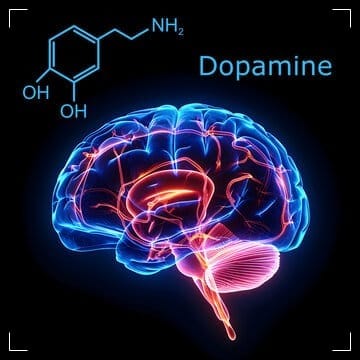
Human trials for this method are not common. There is no profit to be made by the pharmaceutical companies with drugs which have existed for decades, using personalized treatment which varies by individual (and is therefore difficult to quantify without substantial similarities between patients - and I am not a common patient).
For those curious, I've included various embedded links within this document, but here are some additional readings which may offer insight.
- The mesoaccumbens dopamine in coping with stress
- Dopamine D2/D3 receptor agonists attenuate PTSD-like symptoms
- The hypothalamic-pituitary-adrenal axis in PTSD: Pathophysiology and treatment interventions
- Limbic response to stress linking life trauma and hypothalamus-pituitary-adrenal axis function
Why are we talking about the "hypothalamic–pituitary–adrenal (HPA) axis"? Because the Hypothalamus controls Dopaminergic activity, and the Pituitary gland (which controls hormone secretions) is deeply affected by Dopamine levels rising or falling.
In this meditative mode of visual analysis, amidst silent revisitation of trauma-informed responses, my intentional flow of thoughts attempt to concurrently apply a revised emotional mapping to the associative matrices within; to reprogram the damaged links via new dopaminergic pathway etchings - made possible by the cognitive intensity of this combination of meditation and medication.
It feels like removing rust from a long treasured heirloom, to see the glint of its origin material, its remuneration now complete.
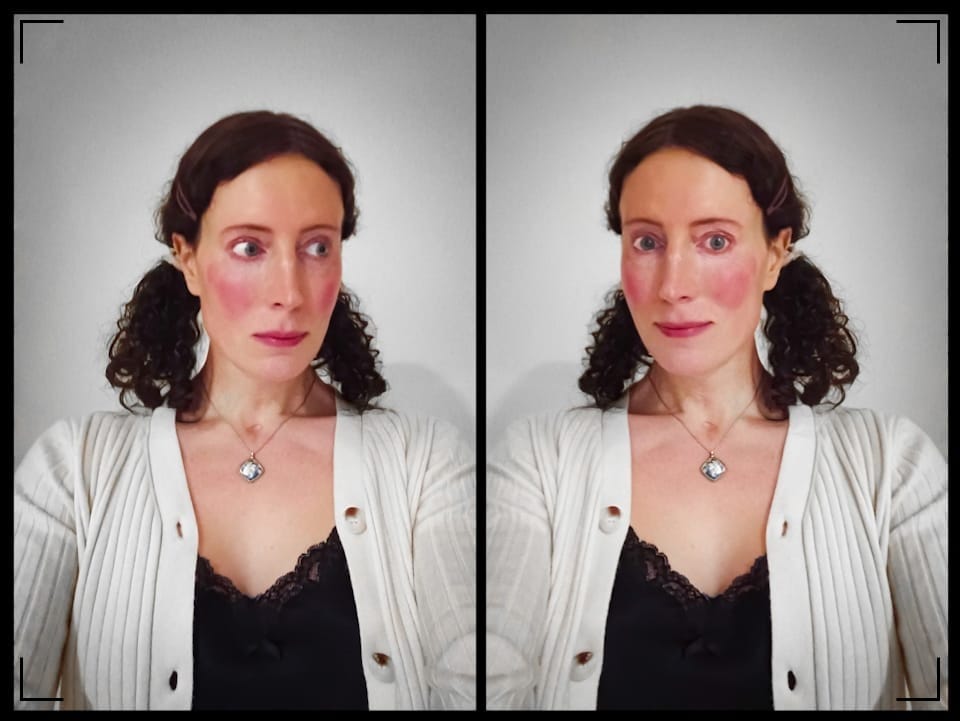
The Great Reprogramming of Dopaminergic Pathways
The mechanism of action involved with this medication facilitates the process of creating new neural connections, by linking sensory data from visual information processing circuity to the emotional response relationships involved with memory recall; all of this occurring via complex actions of the brain's dopaminergic pathways.
During this treatment process my thoughts wander and I don't push back, just let the feelings occur and move forward. It's a form of Zen in some ways, letting the emotions exist without holding on, without "desiring a lack of desire".
Time and distance is required for reprogramming the mind's emotional recall, for forgiveness. The process is possibly never complete, but it's a beautiful experience to find oneself on the other side, able to look backward and see the beautiful ways that once were.
I see those youthful eyes, consistent across each image, reminders every time. The earlier years retained an innocence about them, harboring damage too deep to acknowledge, express, or let forth. Now those moments can be set to rest, and in whatever way it may heal, it offers solace.


